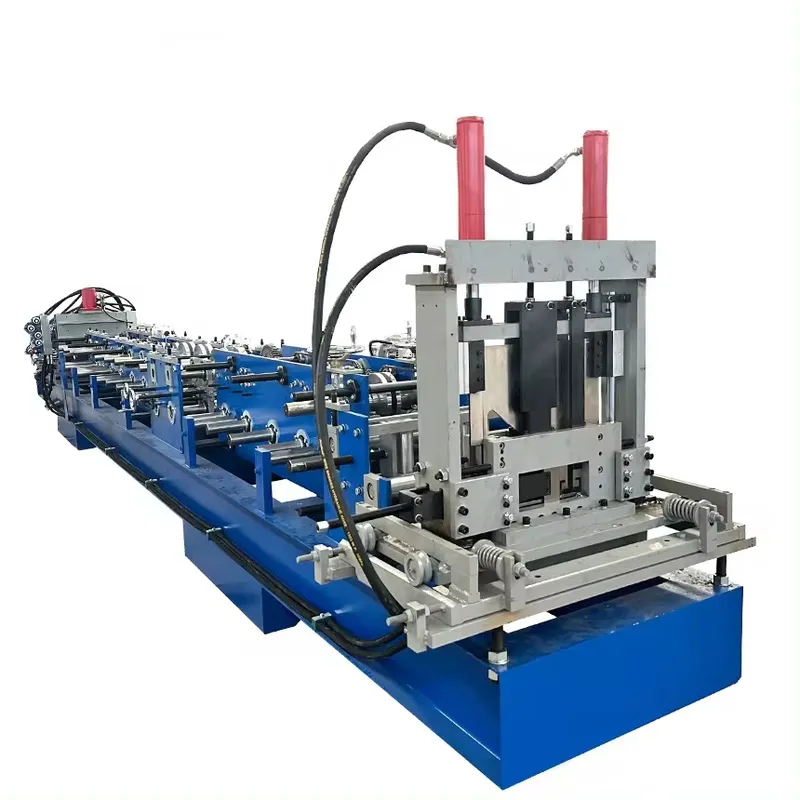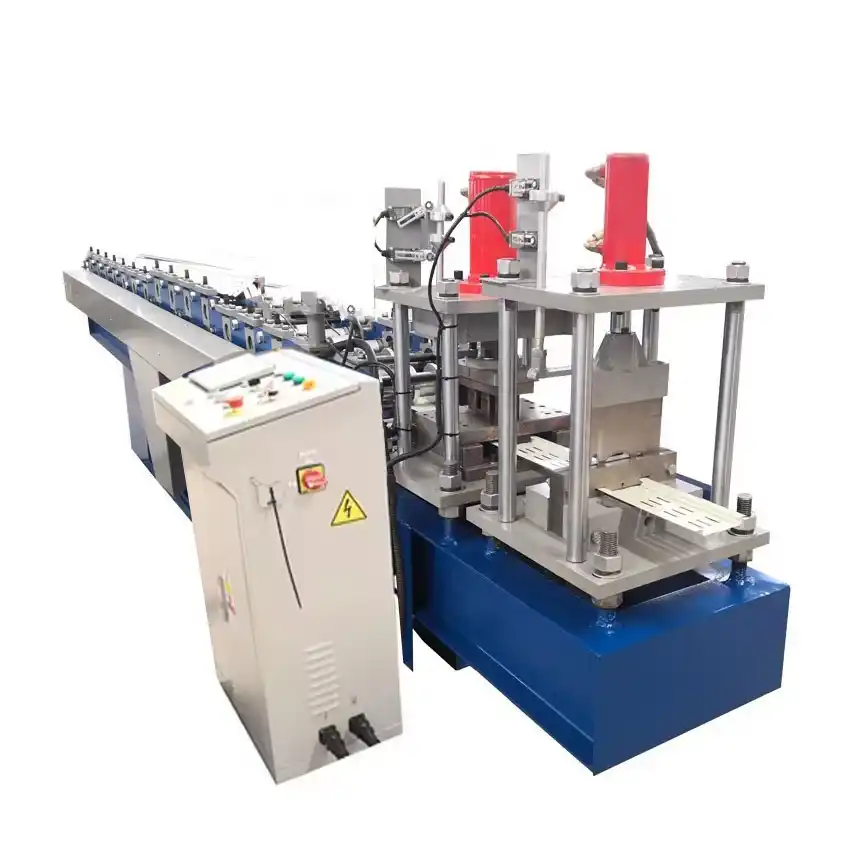The PU Foaming Line and high-pressure polyurethane foam board machine are specialized pieces of equipment used in the construction industry that produce polyester high-pressure foam roof panels. They are known for their exceptional performance and versatility. The purpose of this manufacturing line is to make polyester foam. Using high-pressure technology, it precisely blends liquid polyester materials with other additives. Then, using a particular spraying technique, it uniformly applies the mixture to the surface that has to be filled or protected.
The mixture will rapidly begin to foam as soon as it comes into contact with air, ultimately forming a layer of sturdy and long-lasting polyester foam. Buildings are reliably protected by this foam layer because of its outstanding compression and impact resistance, in addition to its great thermal insulation performance.
Application
Because of its exceptional performance, high-pressure polyurethane board is extensively employed in a variety of construction areas. In the field of vehicle manufacturing, it is used as an insulation material to improve the fuel economy and ride comfort of the vehicle; in the field of refrigeration, it can effectively maintain a low temperature environment to ensure the storage safety of food; and in public places like stadiums and hospitals, it can provide a quiet and comfortable indoor environment.
Our sandwich panel foaming line and high-pressure polyurethane foam board machine perform similarly to similar products both domestically and internationally, but we pay close attention to quality and details during the design and manufacturing processes to make sure that every piece of equipment can satisfy customers’ needs and expectations. Our goal is to assist clients succeed more in the construction industry by offering them manufacturing equipment that is both high-quality and efficient.

Specification of Pu panel machine
The polyester high-pressure foam roof panel production line is a special equipment used to produce polyester high-pressure foam roof panels. This production line combines high-pressure foaming technology with the properties of polyester materials to efficiently produce lightweight and durable roofing sheets with excellent thermal insulation properties.
The production line usually includes main parts such as raw material storage system, high-pressure foaming system, molding system, and cutting and packaging system. By precisely controlling the raw material ratio and foaming process parameters, roofing panels with stable quality and excellent performance can be produced.
Polyester high-pressure foam roof panels are widely used in the construction industry and can be used in roof insulation, wall sound insulation, building exterior wall decoration and other fields. Its excellent thermal insulation performance and lightweight characteristics help reduce the energy consumption of the building and increase its service life.
With the continuous development of the construction industry and the increasing requirements for energy conservation and environmental protection, the polyester high-pressure foam roof panel production line will be more widely used and promoted. At the same time, manufacturers will continue to optimize production processes and equipment performance to meet market demand and improve product competitiveness.
Profiles and flow chart of pu panel machine


Machine parts
1.2 5-ton hydraulic unwinding machines (with trolley)

2.2 roll forming machines

3. High-pressure PU foaming machine
Nozzle head with self-cleaning system

4. Main machine

5. PLC control system PLC

6. Servo motor cutting system

FAQ
Q1: What components make up the primary manufacturing line for polyurethane foaming?
A1: The areas for preparing raw materials, mixing and batching, foaming molding, post-processing, and the automated control system make up the polyurethane foaming production line.
Q2: What is the purpose of the polyurethane foaming manufacturing line’s raw material preparation area?
A2: The raw ingredients needed for polyurethane foaming, including isocyanate, polyol, foaming agent, catalyst, etc., are stored and prepared in this section of the manufacturing line.
Q3: What function does the polyurethane foaming manufacturing line’s batching and mixing area serve?
A3: To provide an appropriate raw material ratio for the foaming process, the batching and mixing section of the polyurethane foaming production line precisely measures and combines the raw ingredients in a specific proportion.
Q4: What is the process for operating the foaming molding section of the polyurethane foaming manufacturing line?
A4: The mixture is thoroughly mixed using high-speed stirring in the foaming molding section of the polyurethane foaming production line to create rich foam, and it is then poured into the mold for foaming and curing.
Q5: What processes are included in the polyurethane foaming manufacturing line’s post-processing area?
A5: To guarantee product quality, post-processing procedures including trimming, cutting, and inspection are carried out on the foamed products in the post-processing section of the polyurethane foaming production line.
Q6: What are the purposes of the manufacturing line’s automated control system for polyurethane foaming?
A6: The polyurethane foaming manufacturing line’s automated control system manages every aspect of the process automatically, including the movement of raw materials and the regulation of ratios, temperatures, timing, and other variables.
Q7: What features does the manufacturing line for polyurethane foaming have?
A7: The manufacturing line for polyurethane foaming has many notable attributes, including a high level of automation, energy efficiency, consistent product quality, and excellent flexibility.
Q8: What safety measures are in place for the manufacturing line that produces polyurethane foaming?
A8: When running the polyurethane foaming production line, it’s important to make sure that all of the equipment is safe and in good working order, to set the raw material ratio and process parameters correctly in accordance with the specifications of the manufacturing process, and to keep a close eye on the equipment’s operational status and the quality of the final product.
Q9: What is involved in maintaining the manufacturing line for polyurethane foaming?
A9: Regular cleaning and lubrication of the machinery, inspection for loose fasteners, and routine inspection of the electrical and control systems of the machinery are all part of the maintenance of the polyurethane foaming manufacturing line.
Q10: What are the manufacturing line’s future development trends for polyurethane foaming?
A10: The polyurethane foam production line’s future development will focus on intelligence, sustainability, and customization. It will implement energy-saving technology and environmentally friendly raw materials, as well as provide customized product solutions. Additionally, it will realize functions like remote monitoring, fault warning, and automatic adjustment.
Q11: What may be the cause of the foam on the polyurethane foam manufacturing line tightening or shrinking?
A11: An excessive quantity of silicone oil or inadequate metering pump accuracy may be the cause of the tightening or shrinking of the foam in the polyurethane foam manufacturing line.
Q12: How can the foam rupture issue in the polyurethane foam manufacturing line be resolved?
A12: Replacing the deactivated silicone oil or tin, adjusting the bag size accordingly, and verifying the accuracy of each metering pump are required steps in solving the foam rupture issue in the polyurethane foam manufacturing line.
Q13: What should I do in the event that the polyurethane foam manufacturing line shows clear indications of foam sliding down?
A13: Should you see any clear indications of foam sliding down in the polyurethane foam manufacturing line, you should examine the TDI metering accuracy and adjust the quantity of TDI accordingly. You should also raise the aging temperature and slow down the conveying speed.




















